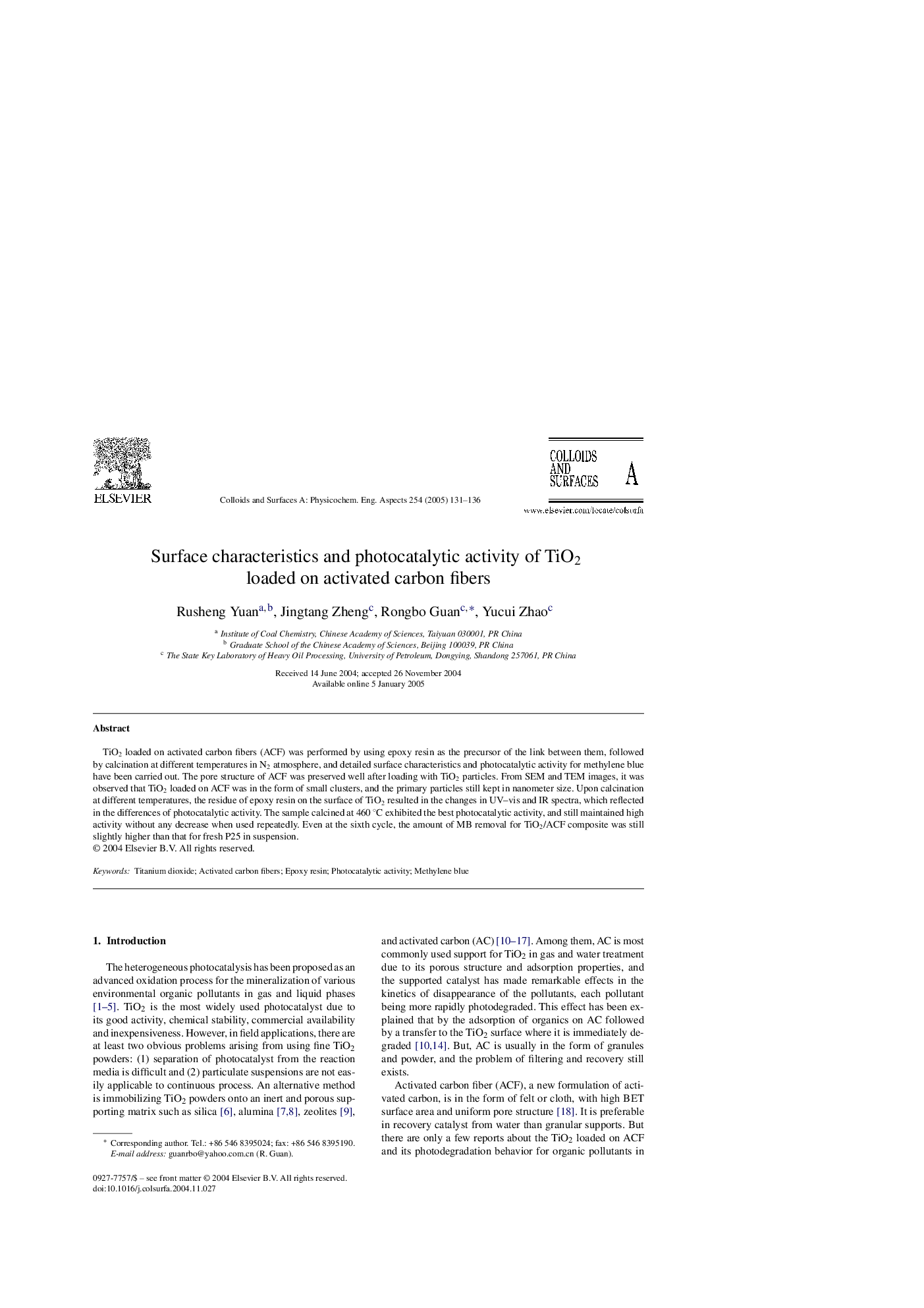| Article ID | Journal | Published Year | Pages | File Type |
|---|---|---|---|---|
| 9676095 | Colloids and Surfaces A: Physicochemical and Engineering Aspects | 2005 | 6 Pages |
Abstract
TiO2 loaded on activated carbon fibers (ACF) was performed by using epoxy resin as the precursor of the link between them, followed by calcination at different temperatures in N2 atmosphere, and detailed surface characteristics and photocatalytic activity for methylene blue have been carried out. The pore structure of ACF was preserved well after loading with TiO2 particles. From SEM and TEM images, it was observed that TiO2 loaded on ACF was in the form of small clusters, and the primary particles still kept in nanometer size. Upon calcination at different temperatures, the residue of epoxy resin on the surface of TiO2 resulted in the changes in UV-vis and IR spectra, which reflected in the differences of photocatalytic activity. The sample calcined at 460 °C exhibited the best photocatalytic activity, and still maintained high activity without any decrease when used repeatedly. Even at the sixth cycle, the amount of MB removal for TiO2/ACF composite was still slightly higher than that for fresh P25 in suspension.
Related Topics
Physical Sciences and Engineering
Chemical Engineering
Colloid and Surface Chemistry
Authors
Rusheng Yuan, Jingtang Zheng, Rongbo Guan, Yucui Zhao,
